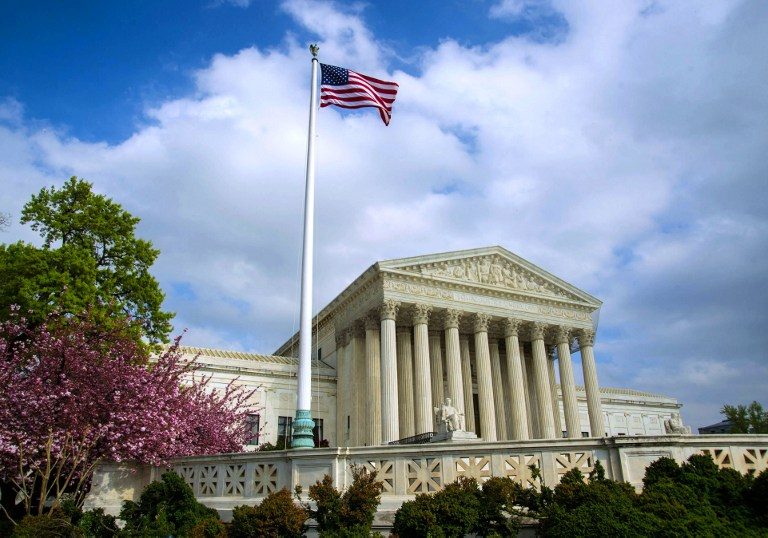SUMMARY
This is AI generated summarization, which may have errors. For context, always refer to the full article.

WASHINGTON DC, USA – The US Supreme Court on Wednesday, March 1, came down on the side of Democrats who charged that certain US electoral districts in Virginia were drawn to dilute the influence of black voters elsewhere in the state.
The high court found that a lower court had erred in deciding that race was not a dominant factor in drawing Virginia’s electoral map.
Democratic lawyers had argued that racial criteria were used to pack 11 districts with African American voters, thereby increasing the proportion of white majorities in other districts.
Specifically, in drawing the disputed districts, the Virginia legislature set as a target populations with 55% African American voters.
Black voters tend to vote Democratic, while majority white districts are more likely to go Republican.
Swayed by the Democrats’ argument, the justices instructed the lower court to review its decision, taking into account whether Virginia’s method of drawing the electoral map is constitutional.
The ruling is particularly noteworthy as civil rights organizations fear a tightening of voting rights for minorities under President Donald Trump.
Voter suppression
The United States has a long history of efforts to suppress the black vote, even though discrimination by race is illegal under the 1965 Voting Rights Act.
The Supreme Court’s decision on Wednesday was written by Justice Anthony Kennedy on behalf of Chief Justice John Roberts and the court’s 4 liberal justices.
Justice Samuel Alito wrote a concurring opinion, and Justice Clarence Thomas wrote an opinion that dissented in part with the majority.
The Voting Rights Act says states should use racial demographic data to enable minority representation but it should not be the main factor guiding redistricting.
But Republican state legislators have used such data to concentrate black voters in districts already represented by minority candidates, so as to weaken the African American base in other districts.
During a Supreme Court hearing in December, Justice Stephen Breyer, one of the court’s liberal members, pointed to the changes in one Virginia district.
“They moved 11,293 people out and 17,000 in. So let’s look at those people,” he said.
“The ones they moved out were three-quarters or something white, and the ones they moved in were three-quarters or something black. So that’s pretty similar,” he said.
“It seems to me they paid a lot of attention to race.”
North Carolina Republicans also have been accused of employing the same racial sorting in drawing electoral districts after Democrats lost their majority in the state’s House of Representatives.
Texas law
This week, the Trump administration took a 180-degree turn from the previous Democratic administration on a Texas election law that a federal appeals court found was discriminatory.
The 2011 law requires voters to present certain types of photo identification, but not other types of official identification, when they go to vote.
For instance, a weapons permit or a military identification are accepted, but not a federal identification document or a student ID.
Opponents of the law say the objective is to exclude black and Hispanic voters, an interpretation that the previous administration shared.
The new administration, however, has submitted a brief defending the Texas law as merely seeking to combat voter fraud, and not an attempt to place obstacles to voting by certain categories of people.
Known as “gerrymandering,” the science of electoral redistricting is a staple of partisan political competition that dates back to the early 19th century.
It is named after Eldridge Gerry, a Massachusetts governor, who carved out a district in Boston that was said to be in the shape of a salamander. – Rappler.com
Add a comment
How does this make you feel?
There are no comments yet. Add your comment to start the conversation.